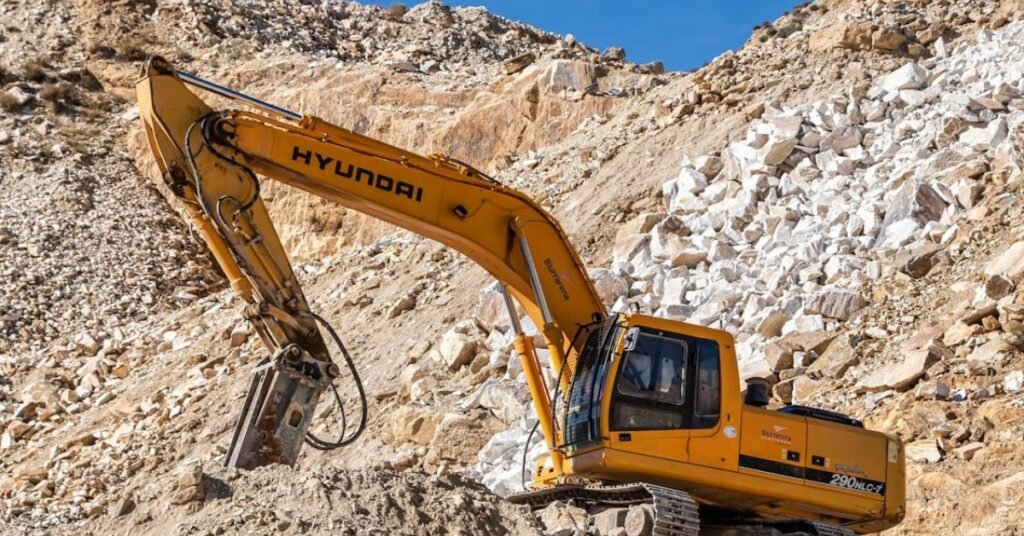The construction of tough surfaces to be broken is a difficult activity. The correct equipment is paramount, regardless of whether the material is concrete, rock or any other hard surface. Making bad decisions might slow down the development, increase the expenses, and even damage your equipment.
A rock breaker increases efficiency and accuracy. Not all models apply to all sites, however. There are several key things to consider before investing or renting. This guide will help you make informed choices.
Match the Rock Breaker to Your Excavator
The main thing is to make sure that the breaker fits your excavator. Each breaker must have a weight and hydraulic flow requirement. A breaker that is too heavy will put a strain on the machine, whilst one that is too light will not do the work. Before making a final decision, always ensure that you have checked the specification of your excavator.
Assess the Material Type
Breakers are determined to have particular material densities. The hard rock requires heavy impact models with a lot of energy. Less rigid materials, such as concrete slabs, can be handled by smaller units. Being aware of the contents of your site will ensure efficiency and limit undue wear.
Consider the Working Environment
Construction sites are different in character. Small breakers may be required in tight spaces. Larger and high-powered units may be used in open areas of mining. Dust, noise and vibration restrictions are also important. These conditions are key factors to consider for staying safe and compliant.
Look at Maintenance and Durability
A good breaker must be easily maintained. There are simple designs that require less time for service, utilising readily available parts. It is also important that it is durable. The breakers are made of hot-rolled steel that is heat-treated and can withstand heavy workloads. A durable model selection minimises downtime and breakdowns.
Evaluate Power and Efficiency
Efficiency relies on striking energy, blows per minute, and operating pressure. Align these factors to the requirements of your project. A heavy breaker is not necessarily the best equipment to use for lighter chores, and a weak equipment will never work on a hard surface. The correct decision increases productivity and reduces fuel consumption.
Seek Expert Advice and Rental Options
In case of doubt, consult equipment suppliers or contractors. They can propose models tailored to your project’s size and requirements. Rentals are available in most businesses, allowing you to test the breaker before purchasing it. In the case of short-term jobs, it may be smarter to hire a rock breaker today rather than buy one outright.
Conclusion
Choosing the appropriate breaker is not about size or power. It requires a good understanding of your machine, the material and the working environment. Planning of projects is a way of ensuring that they proceed without delays and expensive errors.
You should be able to take the time to consider all alternatives, consult an expert, and select a breaker that suits you. The correct decision enhances performance, minimises downtime, and keeps your site on track!


